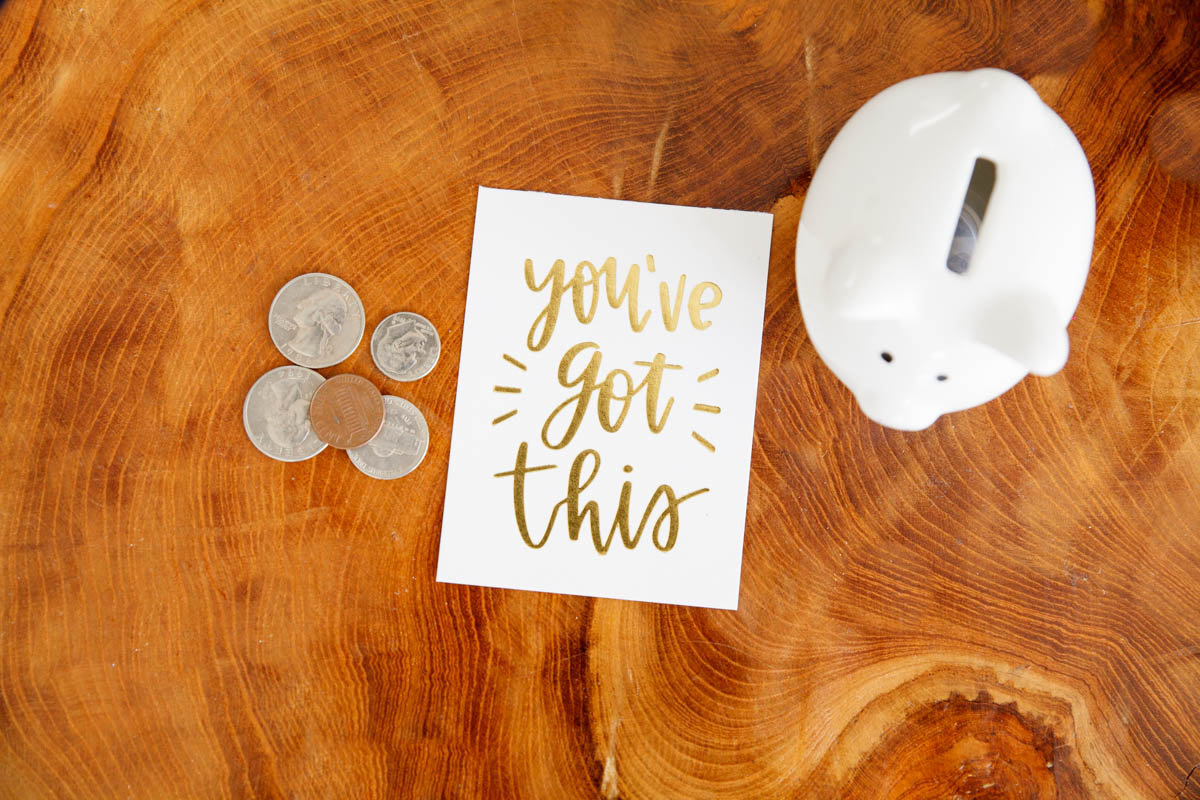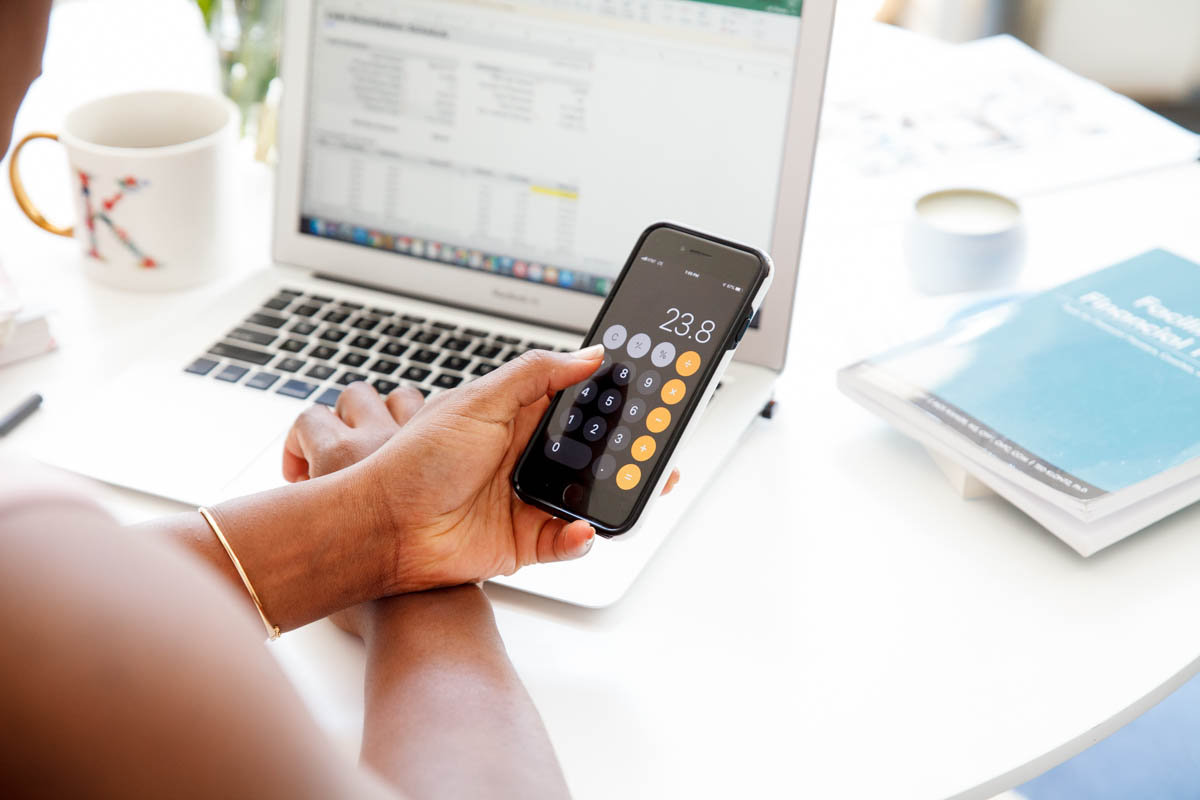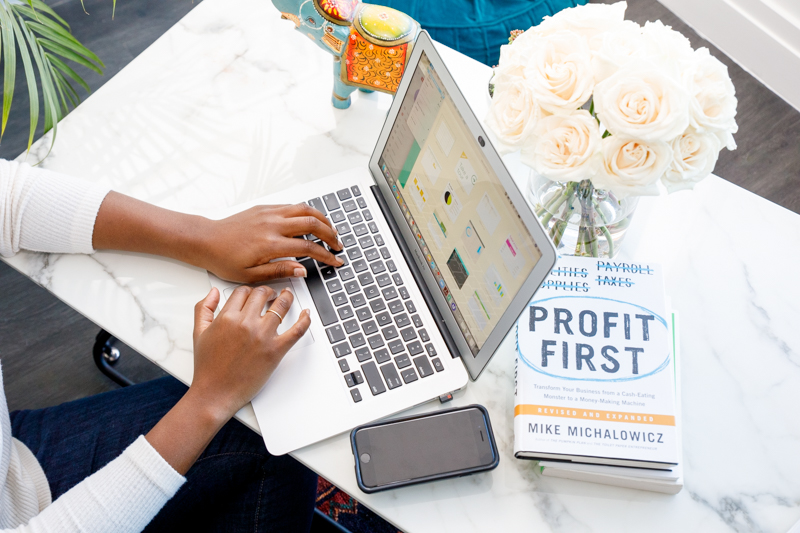As a financial coach, my goal is to create sustainability in your financial journey. Sometimes that means doing things differently. Traditional financial advice says to save $1,000 and put everything else towards paying down debt. But paying off debt can be tiresome and demotivating.
In today’s episode, I offer a more sustainable practice for paying down debt: a debt spending break. A debt spending break fights payoff fatigue by allowing you to use some of the cash flow allocated for faster debt payoff on something you really want. This break remotivates you to continue your debt payoff plan without adding to your debt.
Achieving your goals is all about being intentional and forming sustainable habits. Learn the benefits of instituting a debt spending break, when to schedule one, and the long-term impact of consistency in managing your finances.
Listen for key insights on debt spending breaks:
- [02:50] Aligning financial advice with how you want to live your life
- [06:00] Instituting a debt spending break
- [08:10] When to implement it
- [12:31] Intentionality & goal achievement
Tune into this episode of Money Files to learn how a debt spending break leads towards more sustainable financial habits.
Are you ready to start asking for help with your finances? Apply to work with me, and let’s start working towards your financial goals.
If you loved this conversation about Are You Tired of Paying Down Debt: How To Implement A Debt Spending Break, check out my episode, 5 Reasons Why You Shouldn’t Only Focus On Paying Off Debt!
Transcript for “Are You Tired of Paying Down Debt: How To Implement A Debt Spending Break”
Intro: Hi and welcome to Money Files. I’m Keina Newell from Wealth Over Now. I work everyday with professional women and solopreneurs to help them get out of financial overwhelm and shame so they can experience more flexibility and ease with their finances. Are you ready to gain confidence and learn to manage your finances intentionally? Tune in and grab financial tips that will help you master the way you think about and manage your finances.
Keina: Hello and welcome back to another episode of Money Files. I hope that you are having a fabulous month so far and as always, I really appreciate you tuning into my podcast on a weekly basis. If you are new here, hello and welcome. If you are a return listener, thank you so much for returning. And I want to actually, the past couple weeks I’ve been having conversations about my own financial journey and one of the things that came up in having conversations and thinking about the work that I do and even thinking about what I want for you to have financially is for you to have a sense of how to use financial information to help and support your journey.
And the concrete example of that is I was talking about when I actually lived in St. Louis. So I started as a teacher there and I think I was paying $600 a month for rent, but then I was moving to DC and in my transition from St. Louis to DC the cost of living was a lot higher. I had credit card debt at the time, also like trying to save money on a teacher’s salary, like trying to figure out all the things. And if you look at like financial advice anywhere, the advice that you probably know is save a thousand dollars and then put everything else towards your debt. Like you should be really, really focused on your debt. And when I moved to DC I remember thinking a thousand dollars will not do anything for me. It’s not going to pay my rent. I also don’t know where I’d make up the other money to be able to pay my rent.
And so for me at that time, I made sure that I actually started paying down my debt and saving money at the same time. And I wanted to make sure that I did both because I knew that saving money would make me feel secure. It also makes sure that I wasn’t adding to my debt over time and it would provide me some type of balance. So I wanted to know, for me, I needed to make the financial advice that you hear or you may have read, I needed it to make sense for me and I needed it to feel sustainable for me. And I think that’s one of the things that I love teaching clients is like how do you create this part of your life where the financial advice you’ve heard or that you’ve been given from different people, how do you implement it in a way that aligns with how you desire to live your life and how you want to reach your goals in a way that feels sustainable? Like I don’t want it to feel like a diet for instance.
And we all know the dieting trends and you’re like, I’m going to give up all sugar and you’re like do all of these things that are supposedly going to give you a quick fix but they may give you a quick fix but you end up being back in the same situation that you were in before. Or it may even be a worse situation because of the fact that you try to get results really quickly. And with my program and my five month coaching partnership, I want people to have sustainable results even if it means that maybe it takes you two months longer to pay down debt or it takes you another four months to actually save $10,000, whatever that looks like. Whatever your financial goals are, I would rather you do it in a sustainable way and have the wins that support you for years versus saving the $10,000 really quickly or paying off the debt really quickly.
But what happens is the savings that you had or the debt that you paid off actually goes away and you realize that you are not able to sustain that practice. So my goal is to make things sustainable. And I’m telling you that because today what I am going to talk about might seem like, oh Keina are we allowed to do that? And the thing is you can kind of make up your own rules when it comes to finances. And I want you to be able to have the flexibility in how you go about approaching different goals because in that flexibility there is going to be progress and sustainability. So the thing I’m talking about today is how to institute a debt spending break. And this episode is for you, especially if you have multiple, maybe you have five figures worth of debt or you have six figures worth of debt that you’re paying off and what realistically is going to be true is that it may take you 24 months to pay it off. It may take you 36 months to pay it off.
I know one of my very first clients Amanda, she had over I think $30,000 worth of debt and I think she paid it off within like two years of us working together. But we built a plan that was sustainable and so she’s been able to pay off that debt and stay out of debt. My client Aviana recently messaged me, she just finished paying off almost $30,000 worth of debt. We worked together almost two years ago now, but she’s been able to pay off her debt in a sustainable way and she is still implementing the spending plan that we talked about. She’s had a baby since I worked with her, she’s gotten married. And so I love that my clients are able to reach their goals and the timeline and the timeframe may look a little bit different, but the one thing that is true is that they create a level of sustainability as they are going through the process.
So we’re going to go ahead and dive in to instituting a debt spending break. So a debt spending break is really just you being able to take a break from adding extra money to your debt. Most of the times when you are paying off debt, your goal is to pay more than the minimum on your debt. And the reason that you’re paying more than the minimum on your debt is because you actually want the principal to be going down. But I have some clients that may be paying anywhere from $200 to $1000 extra a month on their debt. And if you are doing that for an extended period of time, you may feel a little fatigued and you may be thinking like, dang, I wish I didn’t have to put an extra, a thousand dollars a month towards my credit card, like what else could I be doing with that money?
And that’s where you can institute a debt spending break. But the debt spending break is there to give you a boost so you can continue your debt payoff plan and feel like you are using your cashflow to not only pay off your debt, but to also feel like you just get that dopamine hit of like, oh, I got to spend like $500 on something that I don’t normally get to spend $500 on. So I want to acknowledge that like sometimes paying off debt can feel tiresome and I want to let you know that it’s okay that you feel that way. I’m not here to make you feel bad that you feel tired in the midst of paying off your debt. I’m not here to make you feel bad if you are like, dang, it would be nice to only pay the minimum of my debt this month.
But I want you to be able to institute a debt spending break in a way that is intentional and not in a way that maybe you realize like, dang, sometimes I don’t put extra money towards my debt. But it’s not because you are being thoughtful about your debt payoff plan. It’s just because you kind of haphazardly pay off debt. So if that’s you, it’s okay. I love you and I can help you get a debt payoff plan, especially if you work with me in my five month coaching partnership. But let’s talk about this debt spending break. So how often should you implement one of these things? So I’m going to give you some timeframes. If you are in a period where you are going to pay off your debt in the next six months, my advice for you is to just buckle down and pay down your debt.
So if you are putting an extra $300, $400, $500 towards that debt, I need you to just buckle down and pay it off. And the reason being is because I need you to have the consistency to just go ahead and pay off your debt, like I don’t think you need to prolong your six month payoff timeline to be, I’m going to pay it off in seven months or eight months. I think that there can be a slippery slope there. And so I want you to just buckle down and pay it off. The next timeframe I want to think about is if you are supposed to pay off your debt, let’s say in the next 12 months, you’re supposed to pay off your debt in the next 12 months, I would say you can institute a debt spending break one time. So within that 12 month period, if there’s a month where you decide, maybe it’s July and you’re like, I would really like to use this money to take a weekend trip, I would really like to use this money to buy some extra clothes.
You can take the extra that you’ve been putting towards your debt and you can spend it in a way that gives you some rejuvenation. And it makes you excited to go back in and continue to pay off your debt month to month. If you have a two year plan or a three year plan that you know is going to be true in terms of let’s say you have $40,000 worth of debt and you’re like, okay, it might actually take me two years to pay this off, then I would say that you can have two debt spending breaks. So the rule for the debt spending break is that you can have one break within a 12 month cycle and you don’t want to. And the reason is because I don’t want you to over delay your debt payoff process or it’s kind of like when you have a gym habit. I relate everything to nutrition and fitness if you haven’t noticed.
But let’s say you have a gym habit and you are really consistent with the gym, but if you let yourself like miss three days in a row, it’s really easy to all of a sudden not be going to the gym. And so when I think about that 12 month period, if you are allowing yourself every other month to not pay more than the minimum towards your debt and you’re giving yourself consistent debt spending breaks, what you’re not going to be giving yourself is the consistent experience of you actually being able to pay down your debt month to month. So just be really, really mindful of that. And some of you, maybe even listeners that I’ve worked with, if you could raise your hand and be like, dang, I’ve actually been giving myself debt spending breaks, and it would look like, oh, I’m just going to take a little bit from what I’m paying towards my Amex card or my Visa card and I’m going to use this to pay for something else that I want. Just be onto yourself because what’s happening is you are delaying a goal that you said you wanted to hit.
I would rather that you are actually honest and you’re like, hey, I actually have been putting $500 a month towards my debt and maybe it actually feels better right now during this season to do $400 a month, let’s actually just name that and change your budget to reflect it versus you not being really honest with where your numbers are. So some of you may require honesty and actually just going back and saying like, what can I actually be paying extra towards my debt? And then there’s another group of you that I actually want you to start instituting or feel comfortable saying, you know what my debt is, it’s going to take me 12 months to be able to pay off my debt and I am going to use one month to take the extra and treat myself and that’s going to give me that boost to be able to continue to pay off my debt.
So if you are on board or creating an debt spending break, I want you to know that it needs to be something that you planned, like actually look in the next 12 months when might be that opportunity that you want to actually take a break from paying extra towards your debt. So I don’t want it to be just something that you wing, I need you to actually plan for it. Getting and reaching your goals is all about being intentional. You have to have a plan. You’re not going to reach that goal of having your debt paid off by being haphazard. And the same is true in instituting a debt spending break is that I want you to know when is the time that I’m going to use it and honor that decision that you made with yourself.
The other thing that I want you to be mindful of and just watch for is when you find yourself tempted to do it, your debt spending break often, because what’s happening is that you’re not actually paying down your debt at that point. You just have a fake debt payoff plate. So that’s why I want you to make sure that you’re planning for it and that within these 12 month timeframes, you’re only using your debt spending break once and if you are using it more than once, and I need you to have that honest conversation with like, why am I using this? Am I actually using it to give myself a boost to continue playing off my debt or is there somewhere like within my spending that I’m just not being honest with myself? And those are two different conversations to have because one of them is like you just kind of turning off the security cameras to your debt payoff plan. And the other one is you being really intentional about keeping your motivation and your consistency towards paying and being out of debt. So then that way when your debt is actually paid off, you’re able to repurpose that money in your budget.
So thank you for tuning into today’s episode. I just wanted this one to be something that short and sweet and really just giving you permission to do things differently. I’m sure there are some people in the financial world that’ll be like, you can’t take a break from paying down your debt. You need to make sure you’re throwing everything towards your debt. And so when you live in that mentality, what you do is end up putting yourself on the other side of being debt-free, but not knowing how to manage that life of being debt-free or because you’ve never been able to spend money on things because you’ve been putting all of your money towards debt, you feel very deprived. And so then you get into a space where you end up overspending. So this debt spending break is really about creating sustainability in your financial journey so that you do create that freedom for yourself to be debt free.
So thank you so much for tuning in and if this episode resonated with you, share it with a friend. If you share it on social media, definitely tag me. And if you want to take a deeper dive into this work and have a partner that helps you go through your finances, literally, it tells you exactly what to do with your money or you want to be able to institute a debt spending break and you would like my accountability and support, then you can go to my website and you can apply to work with me or you can go to the show notes and there’s a link to apply there. So if you go to Wealthovernow.com, you’ll see at the top that it says Book A Call and I would love to see you on my calendar so I can help you overcome whatever financial challenges you have right now and to be in a space in which you feel drama free about spending money. So I will talk to you later. Have a great week and I will talk to you next week.
Outro: Thank you so much for listening to Money Files. If you’re ready to take the next step to reach your financial goals, head to www.wealthovernow.com/appointment and let’s get started.



